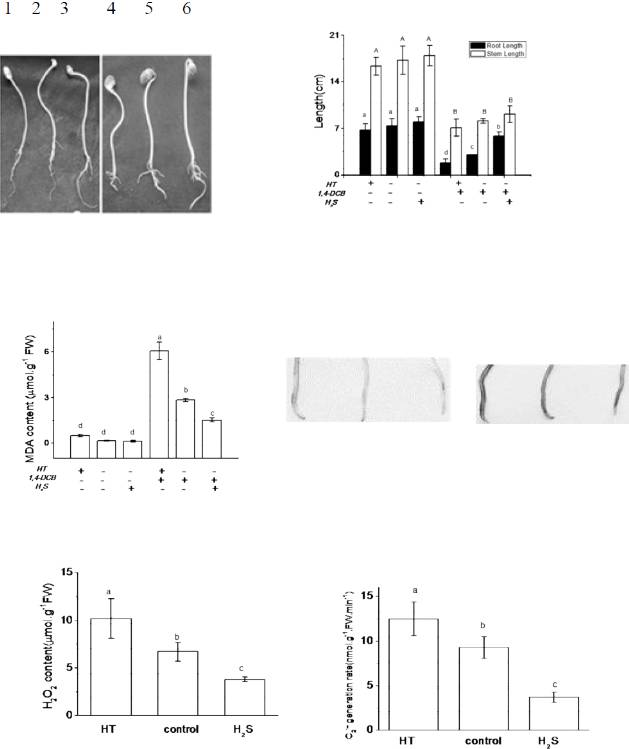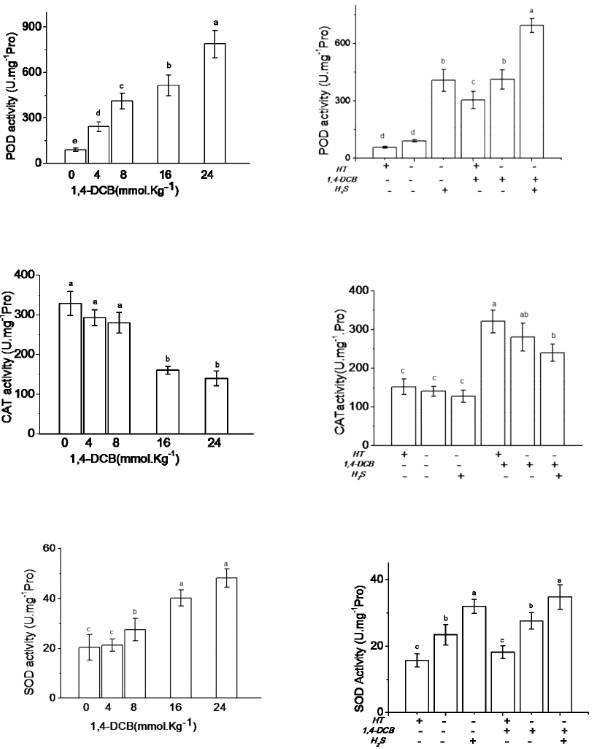ABSTRACT:
As a gas signaling molecule, endogenous hydrogen sulfide (H2S) plays a crucial role in the plant stress response. However, the role of H2S in the response to organic pollutants specifically has not been studied. Here, the effects of H2S addition on soybean (Glycine max) seedlings tolerance of 1,4-dichlorobenzene (1,4-DCB) were investigated. Under 1,4-DCB stress, the growth of soybean seedlings roots and stems was inhibited, while L-/D-cysteine desulfhydrase (LCD/DCD) activity was induced and endogenous H2S increased. When applied jointly with sodium hydrosulfide (NaHS), a H2S donor, root growth inhibition was effectively alleviated. Pre-treatment of seedlings with 0.4mmol L-1 NaHS reduced the malondialdehyde (MDA) and reactived oxygen species (ROS) content, mitigating root cell toxicity significantly. Further experiments confirmed that NaHS enhanced soybean seedlings peroxidase (POD) and superoxide dismutase (SOD) enzyme activities. In contrast, these effects were reversed by hypotaurine (HT), a H2S scavenger. Therefore, H2S alleviated 1,4-DCB toxicity in soybean seedlings by regulating antioxidant enzyme activity to reduce cell oxidative damage.
Key words:
hydrogen sulfide (H2S); soybean seedlings; 1,4-dichlorobenzene (1,4-DCB); toxicity; oxidative stress

 Thumbnail
Thumbnail
 Thumbnail
Thumbnail
 Thumbnail
Thumbnail


